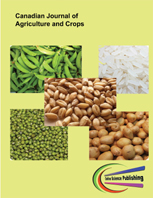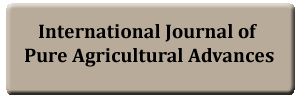Plantain/Watermelon Intercropping Systems for Improved Food Security and Income Generation during the Late Cropping Season
DOI:
https://doi.org/10.20448/803.5.1.92.102Keywords:
Plantain, Watermelon, Intercropping, Poultry manure, Climate change, Food security.Abstract
The application of poultry manure to plantain/watermelon intercrop was explored for improved yield, income generation and for sustainable production of plantain in drought prone areas for food security, poverty and hunger eradication in Nigeria. The mixture was established during the late cropping season in Southeastern Nigeria. The treatments consisted of three poultry manure rates (0, 10 and 20 t ha-1) applied to plantain intercropped with four watermelon populations (0, 2500, 5000 and 10,000 t ha-1) in September, 2010 and arranged in 3 x 4 factorial experiment in Randomized Block Complete Design. Sole plantain without poultry manure was the check. Application of 20 t ha-1 of poultry manure to plantain/watermelon intercrop resulted in rapid vegetal cover, high (96 %) plantain survivability, and effective weed suppression, and improved yields of plantain and watermelon compared to unmanured intercrops. Furthermore, the yield decline in plantain was low in manured plantain/watermelon intercrops. The application of 10 t ha-1 of poultry manure to plantain intercropped with 2500 stands ha-1 of watermelon population in the late cropping season was cost effective and had highest benefit cost ratio (6.68) and is therefore recommended to farmers for sustainable plantain production in drier zones.


